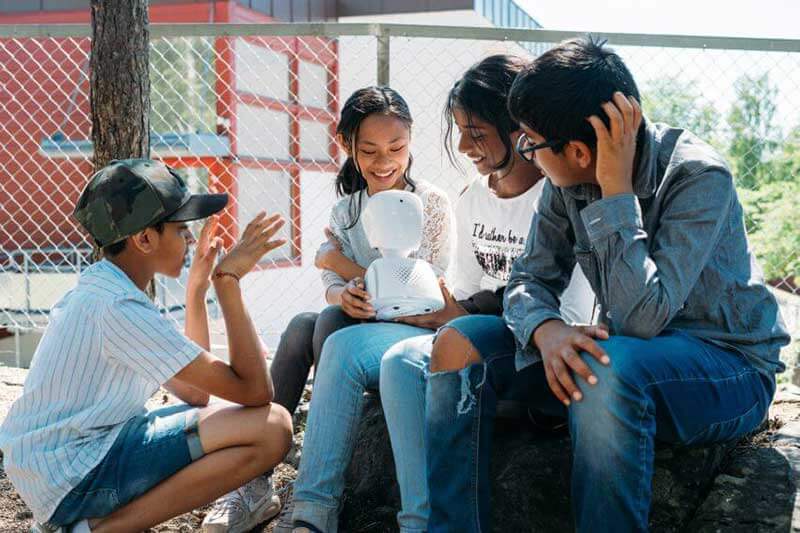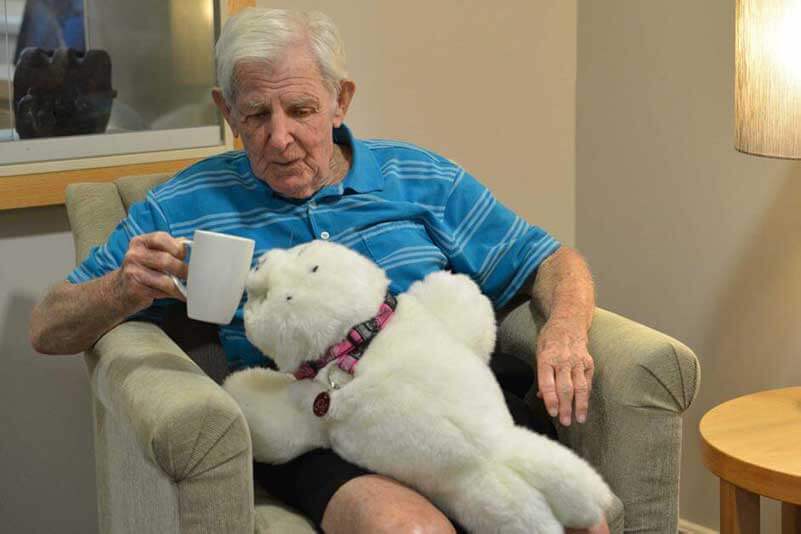- Technology can bring people together
- Children with long-term illnesses can attend school through a telepresence robot
- Digital screen enables the elderly to connect with the people around them
- Robot seal can help reduce anxiety and encourage social interaction
Humans are social beings, and we crave the company of others. However, and ironically in this time where everything and everyone is always connected, it’s becoming increasingly difficult to fulfill that need for real connection, which can often lead to social isolation and loneliness. These, in turn, can have serious consequences for both our mental and physical wellbeing. In fact, social isolation and loneliness are now widely recognised as some of the biggest issues facing our society today. A recent report published by the British Red Cross revealed that more than 9 million people in the UK always or often feel lonely. Prolonged social isolation and loneliness can lead to a wide variety of health issues, including anxiety, depression, increased blood pressure and cholesterol levels, cognitive decline, dementia, and Alzheimer’s disease.
It’s also been linked to an increased risk of early mortality, heart disease, and stroke. “The harm loneliness can cause, both physically and mentally, can be devastating to people of all ages – it is a serious public health concern which studies suggest can be as harmful as smoking 15 cigarettes a day,” says Izzi Seccombe, a chairwoman of the Local Government Association’s committee on well-being. So, what can be done to address this problem? Some people believe that technology could be the answer.
Technology can bring people together
In recent years, we’ve seen a number of technological innovations designed to help people combat the feelings of loneliness and social isolation. Technology can bring people together, and it allows them to stay connected to each other, which can significantly improve their quality of life. No Isolation is a Norway-based startup that develops communication tools aimed at people affected by loneliness and social isolation. The company has released two products so far, a telepresence robot called AV1, which allows children and young adults who suffer from long-term illnesses to attend school, and KOMP, a digital screen that allows children to share photos with their grandparents, message them, and make video calls.

Children with long-term illnesses can attend school through telepresence robot
There are more than 72,000 children in the UK alone who are unable to attend school due to long-term illness. Being forced to spend prolonged periods of time away from their friends and being unable to take part in everyday activities can have devastating consequences on a child’s mental wellbeing. The AV1 is a small, 27-centimetre-tall robot, designed to take the child’s place in the classroom. It acts as their eyes, ears, and voice, and allows them to feel as if they were actually there. It’s equipped with a 5-megapixel camera, a digital microphone, and a powerful 4-ohm loudspeaker, which enables the child to see and hear everything that takes place in the classroom via a mobile app. The child can even participate by pressing a button to answer a question. The robot is powered by 4 Li-ion batteries, which allow it to run for about 6 hours on a single charge. It costs around £2,200 and is already used in a number of schools in Scandinavia, the Netherlands, and the UK.
“The ministry has noticed that using this type of robot can be very beneficial for students who cannot attend school due to illness or injury. Using the robot to follow teaching and what is happening at school can provide the student with important training and an experience of not being completely absent and socially isolated from their class and classmates,” the Norwegian Ministry of Education says in a statement.
Digital screen enables the elderly to connect with the people around them
According to Age UK, the United Kingdom’s largest charity working with older people, there are more than a million elderly people in the UK who are chronically lonely, going days and sometimes even a month without seeing or talking to anyone. Unfortunately, most of the technology out there that could enable them to stay connected with their loved ones isn’t exactly geared toward senior citizens, who are often completely disregarded by the tech industry at large. Thanks to No Isolation, however, that may be about to change.
KOMP is a simple communication device aimed specifically at elderly people. It allows them to share photos with their family and friends, exchange messages, or make video calls. The device is equipped with a 17-inch high contrast screen, an 8-megapixel camera, and a 6,5 cm full-range speaker. KOMP only has one button and doesn’t require any logins or passwords, making it easy to use even for people who aren’t tech-savvy. “It is high time that the more vulnerable members of society become the focus, because for them, the right kind of technology can really be life changing,” writes Karen Dolva, the company’s CEO and co-founder, in a blog post. “Our goal, as a tech startup, is to help, not hinder. We know that computer and mobile manufacturers are not looking to develop for seniors, so we decided that we must.”
Robot seal can help reduce anxiety and encourage social interaction
Developed by the Japanese industrial automation pioneer AIST, Paro is a therapeutic robot seal aimed primarily at elderly people who desire company. Paro weighs nearly 3 kilograms and is equipped with five types of sensors: light, tactile, auditory, temperature, and posture. This allows it to perceive people and its environment, recognise voices and respond to certain words, detect when it’s being held or stroked, and track motion. It’s also equipped with 32-bit processors, microphones, and motors, which allow it to move its head and legs and imitate the sounds produced by real baby harp seals.

Paro was the subject of several scientific studies that aimed to determine its usefulness as a therapeutic tool among the elderly and those suffering from dementia. The researchers found evidence to suggest that interacting with Paro can help people reduce stress and anxiety, improve their mood, and encourage social interaction. However, they also pointed out that it should be used only as an aide and that it can’t replace actual human contact. Unfortunately, all of this innovative technology comes at a staggering price of $5,000, making it unlikely to reach a wider audience any time soon.
Loneliness and social isolation are serious issues that are affecting millions of people all over the world and have a major impact on their mental and physical wellbeing. So, can technology be the solution to the world’s loneliness epidemic? While it can’t replace actual human contact at this point – and may never be able to – there’s evidence to suggest that technology can improve people’s quality of life by allowing them to stay connected to their family and friends.
Share via:


